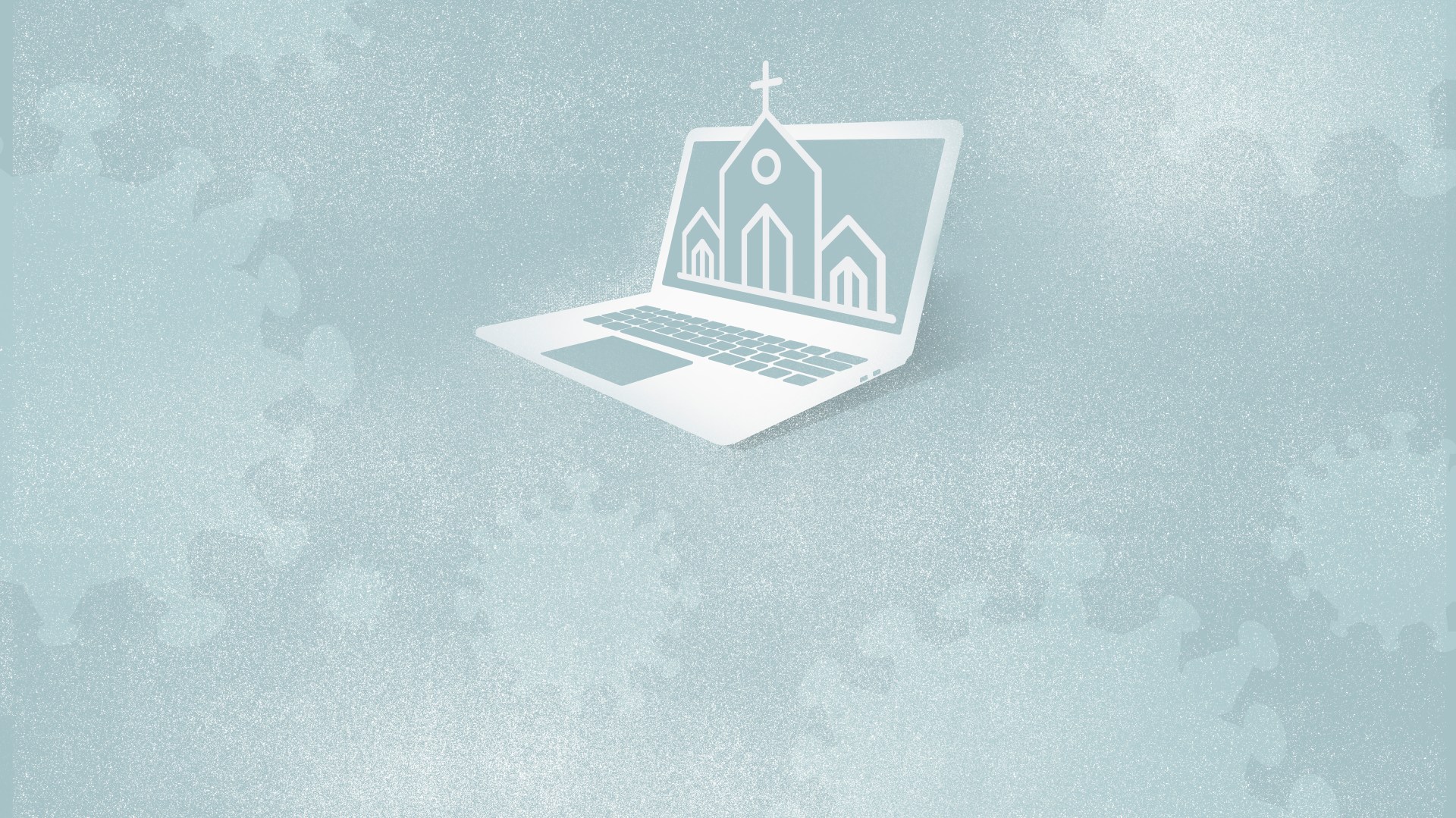When the COVID-19 pandemic left church congregations unable to meet in person, the team at Ministry Brands sprang into action. Ministry Brands, a family of software companies, provides technology solutions to more than 115,000 churches and faith-based organizations. Through digital giving platforms, church management software, website services, mobile apps, and more, Ministry Brands empowers its customers to flourish in a digital age.
Ministry Brands “went into crisis mode” as stay-at-home orders were put into effect, “because customers needed us,” said David Rogers, senior vice president of marketing. Their staff began to work around the clock and through the weekends as church leaders flooded their phone lines and inboxes. They needed to make online giving simple, they needed to livestream, and they needed to stay in touch with their congregants without the touchpoint of Sunday morning services—and they needed to do it all immediately.
Ministry Brands quickly put together a mid-March webinar to advise church leaders on online giving, streaming, and use of new communication tools. Some of the pastors who joined the session shed tears of fear and anxiety. How would they continue ministering to their congregants? How could they encourage tithing in a time of financial instability? How could they keep their churches, and their own families, afloat in an uncertain time?
Capturing attendance
Among the words of comfort and advice the Ministry Brands team offered were these: You must constantly communicate. As many churches had never previously offered livestream services and relied on Sunday morning face-to-face time to encourage tithing, Rogers and his staff emphasized that pastors had to switch their mindsets from those of preachers with a captive audience to communicators with a distracted audience.
As congregants and visitors tune in online, Rogers explains, chances are good they don’t bring their full attention. “Attending” church from home means that many viewers feel free to get up for a second cup of coffee, or to use the restroom, or to switch out a load of laundry at nearly any point during the service. Kids may be running circles around their parents as the worship band plays, or phones may be lighting up with breaking news notifications as the pastor makes his three points.
This may all sound disheartening to pastors experiencing distance from their congregants, but the Ministry Brands team used the webinar to explain that all it means is this—you have to talk about giving, and you have to talk about it more than once. In fact, they encourage churches to “put the [donation] link up and leave it up” during a portion of the service livestream.
Troy Pollock, chief ambassador at Pushpay—a cloud-based online payment solution that helps more than 7,000 churches around the world centralize donation data and manage their payment options—and his team advise pastors to share stories of how the church is ministering in order to encourage giving. “How are you telling the story of impacted lives?” Pollock asked. “Celebrate those stories.”
Pollock gives two examples of calls to giving that pastors may be trying in the pandemic-and-digital-church age. The first was, essentially, “We’re running low. We don’t know how we can keep paying our pastoral staff. Help.” This message, of course, may be entirely true—but it’s not especially persuasive. More than that, it doesn’t remind people of the purpose of the church—being a light in the world. So Pollock and the Pushpay team recommend another approach, another story.
“Let me tell you about the Smith family,” Pollock said as an example. “They’ve lost their jobs due to the pandemic. They owned a small business and had to lay off their employees and shut their doors. So we sent a crew to their house with a check and groceries.” Personal stories like the Smiths’ encourage giving in ways mere listing of expenses cannot.
The point isn’t to beg for enough money to keep the church alive. The point is to remind the church of God’s goodness in the world through his people, even—perhaps especially—in a time of scarcity like this one.
Tithing remotely
Pollock also emphasizes the importance of making giving simple. Many people use Venmo and ApplePay regularly, he explains, but 85 percent of them are likely to abandon an online giving form if it takes longer than 30 seconds to make the donation. Streamlining the giving process as much as possible while still ensuring a professional, attractive aesthetic and internet safety precautions is critical for churches and organizations who rely upon donations.
Dean Sweetman and Frank Barry at Tithe.ly say that they’ve seen online giving bless churches accustomed to technology and those who had no online presence before the pandemic alike. One church that Tithe.ly supports saw nearly 20 percent more givers go digital over 30 days from late March to late April. This church already had an online giving option before the pandemic, and a large number of their congregants used it, but this unusual cultural moment has motivated many people who had previously been reluctant to give online to do so.
Another Tithe.ly church—a 50-member congregation in Texas that Barry describes as “a little white church on the corner”—had no streaming or digital giving available before the pandemic. The church signed up with Tithe.ly on March 20, and by April 20, 40 percent of their giving was happening digitally.
The necessary rush to digital platforms shouldn’t leave behind those congregants who simply can’t bring themselves to give online. Pollock recommends encouraging all givers to go online through storytelling, personal contact, and even offers of technical support if needed. But to accommodate those tithers who still aren’t comfortable with online giving, he suggests pastors offer to mail them a church-addressed, stamped envelope or to discuss a giving option that they are comfortable with.
Many older members of church congregations have reservations about giving online, the very members who will need to socially distance and isolate longer than their spiritual brothers and sisters. It is imperative to speak with these older members about potential methods of giving for the sake of the church’s budget and, even more, for the sake of empowering all congregants to worship through their giving, underlining how valuable their participation is to the ongoing life and ministry of the church.
Finding aid and other essentials
Recent legislation like the Coronavirus Aid, Relief, and Economic Security (CARES) Act can help sustain the ongoing life and ministry of churches. Scott Figgins, senior vice president of insurance operations at Brotherhood Mutual Insurance Company, said that church and organization leaders need to keep an eye on government relief packages and forgivable loans for small businesses. Churches and Christian organizations often qualify for such funding, and likely have the opportunity to receive temporary funding without interest.
Figgins recommends that churches and organizations secure such loans through a bank they already have a relationship with or through a small community bank. Some of the loan forms and requirements can be difficult to interpret, and a small or familiar bank that can offer experts by phone or online to guide leaders through the process can help tremendously in meeting the unique financial needs of such organizations.
In terms of long-term sustainability, Wesley Lindsey, director of marketing and communications for Medi-Share, an alternative to health insurance for faith-based consumers, suggests revisiting health care costs.
“As leaders look for ways to reduce operating costs to stay afloat, there is a health care option that can save businesses and ministries a significant amount of money,” Lindsey said.
Medi-Share has also launched the Sharing Hope initiative—a website full of “wisdom and resources in the wake of COVID-19.” The site offers videos, Bible-reading plans, mental health guides specific to COVID-19, and coronavirus prevention information that can serve to support churches, organizations, and individuals alike. For church and organization leaders, Lindsey suggested the interview with Miles McPherson, lead pastor, and Ben Boykin, chief technology officer, of Rock Church in San Diego, California, “on how they have navigated virtual church and have grown their ministries’ reach four-fold in this moment in time. They are holding live webinars weekly and giving away what they learned to other churches to serve their communities better to advance the kingdom.”
Mark Friesen, principal at Clergy Financial Resources, recommends that pastors and leaders “throw out the 12-month budget and switch to a 3-month budget.” They should start by prioritizing their ministries according to what they absolutely must have. Friesen asks them to pare down to essential questions: What the most important item and purpose of the church? What does our church do best? What is our focus? The answer to these questions will help church leaders determine what’s essential to maintain and what other ministries and initiatives are things they “should have” or “are nice to have.”
Friesen knows that while these steps sound simple and doable, they’re difficult to take in light of the impact that they can have on the lives of staff members and the life of the church. He doesn’t want to discourage leaders, however, but to empower them. According to Friesen, this pandemic-to-post-pandemic era is a time for vision and hope based on the fact that, while the church may look different in the months and years to come, those differences provide opportunity to learn and change. And they remind us of a salient truth promised in Scripture—as long as Jesus tarries, his church, whether in a form we’ve seen before or a brand-new iteration, will remain.
Abby Perry is a freelance writer who lives with her husband and two sons in Texas. You can find her work at Sojourners, Texas Monthly, and Nations Media.
Posted


